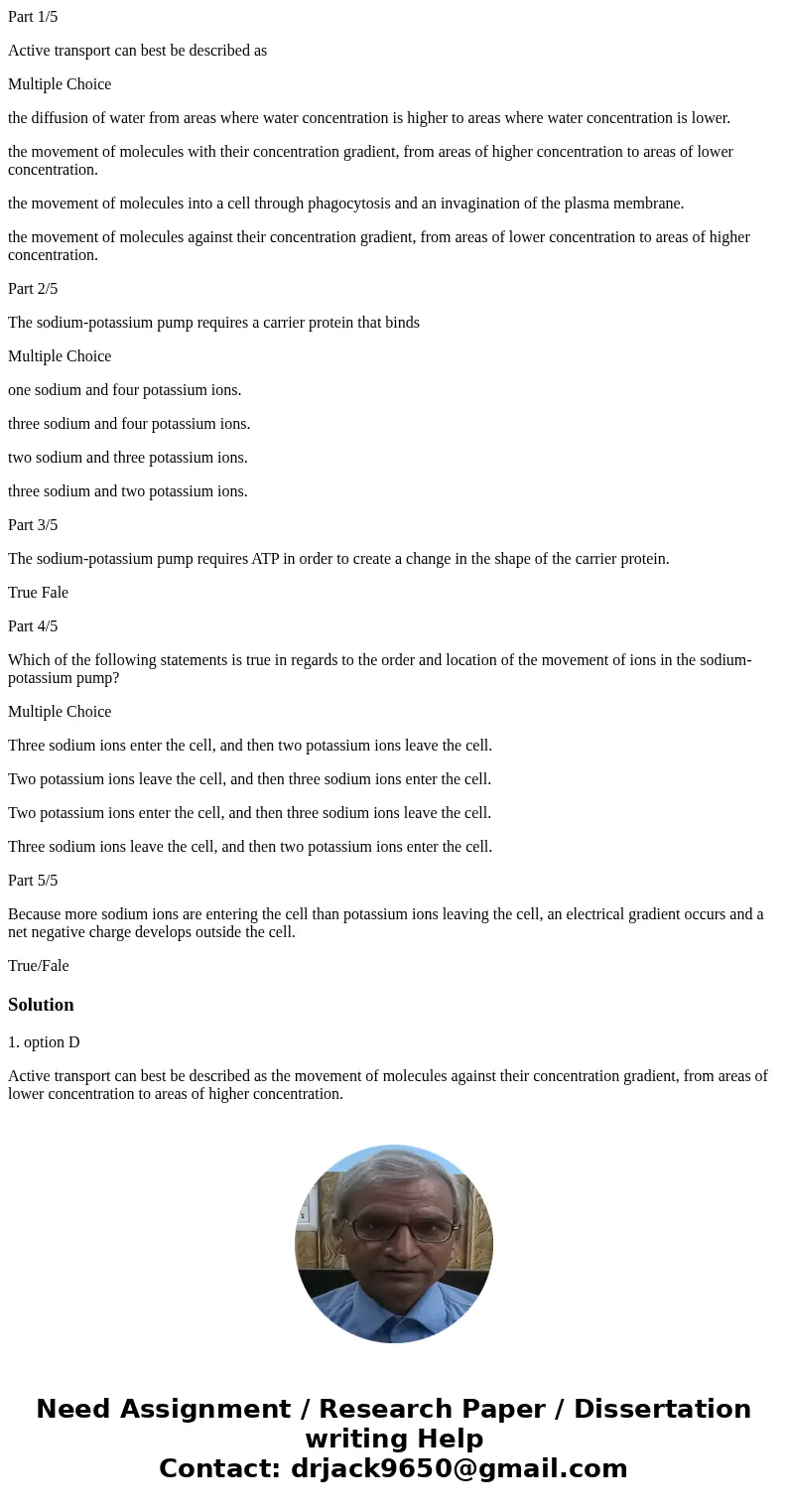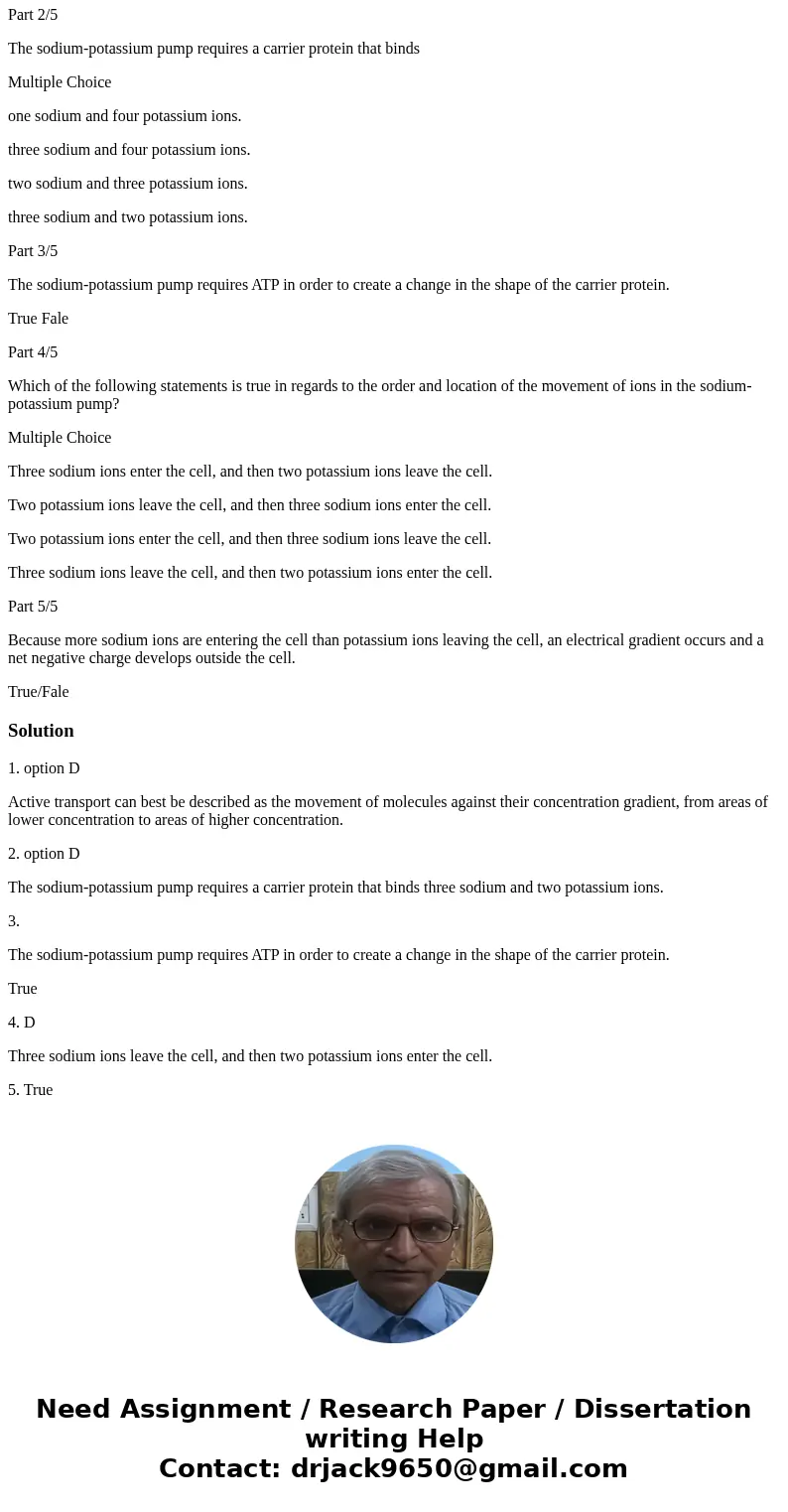Part 15 Active transport can best be described as Multiple C
Part 1/5
Active transport can best be described as
Multiple Choice
the diffusion of water from areas where water concentration is higher to areas where water concentration is lower.
the movement of molecules with their concentration gradient, from areas of higher concentration to areas of lower concentration.
the movement of molecules into a cell through phagocytosis and an invagination of the plasma membrane.
the movement of molecules against their concentration gradient, from areas of lower concentration to areas of higher concentration.
Part 2/5
The sodium-potassium pump requires a carrier protein that binds
Multiple Choice
one sodium and four potassium ions.
three sodium and four potassium ions.
two sodium and three potassium ions.
three sodium and two potassium ions.
Part 3/5
The sodium-potassium pump requires ATP in order to create a change in the shape of the carrier protein.
True Fale
Part 4/5
Which of the following statements is true in regards to the order and location of the movement of ions in the sodium-potassium pump?
Multiple Choice
Three sodium ions enter the cell, and then two potassium ions leave the cell.
Two potassium ions leave the cell, and then three sodium ions enter the cell.
Two potassium ions enter the cell, and then three sodium ions leave the cell.
Three sodium ions leave the cell, and then two potassium ions enter the cell.
Part 5/5
Because more sodium ions are entering the cell than potassium ions leaving the cell, an electrical gradient occurs and a net negative charge develops outside the cell.
True/Fale
Solution
1. option D
Active transport can best be described as the movement of molecules against their concentration gradient, from areas of lower concentration to areas of higher concentration.
2. option D
The sodium-potassium pump requires a carrier protein that binds three sodium and two potassium ions.
3.
The sodium-potassium pump requires ATP in order to create a change in the shape of the carrier protein.
True
4. D
Three sodium ions leave the cell, and then two potassium ions enter the cell.
5. True


 Homework Sourse
Homework Sourse